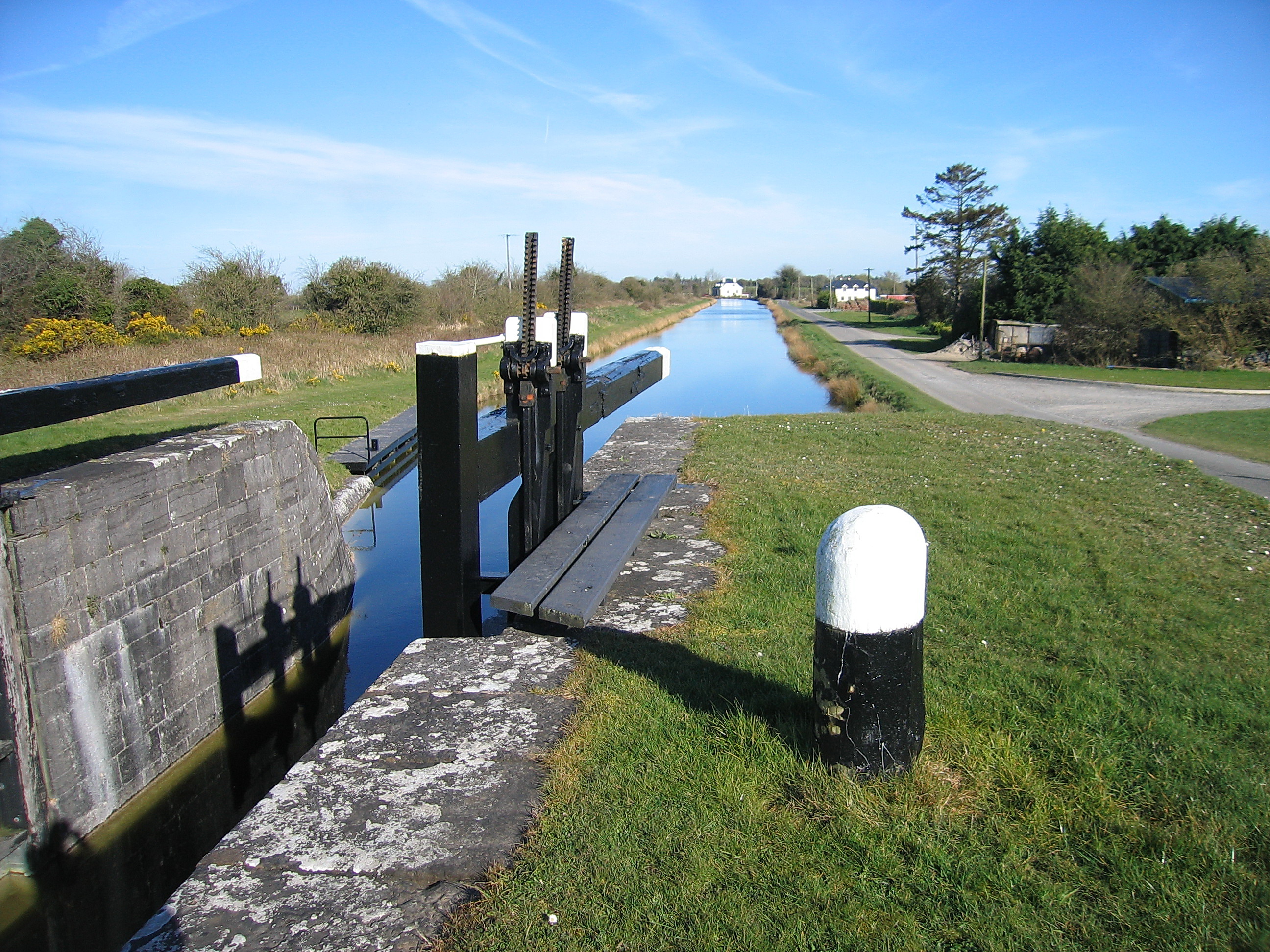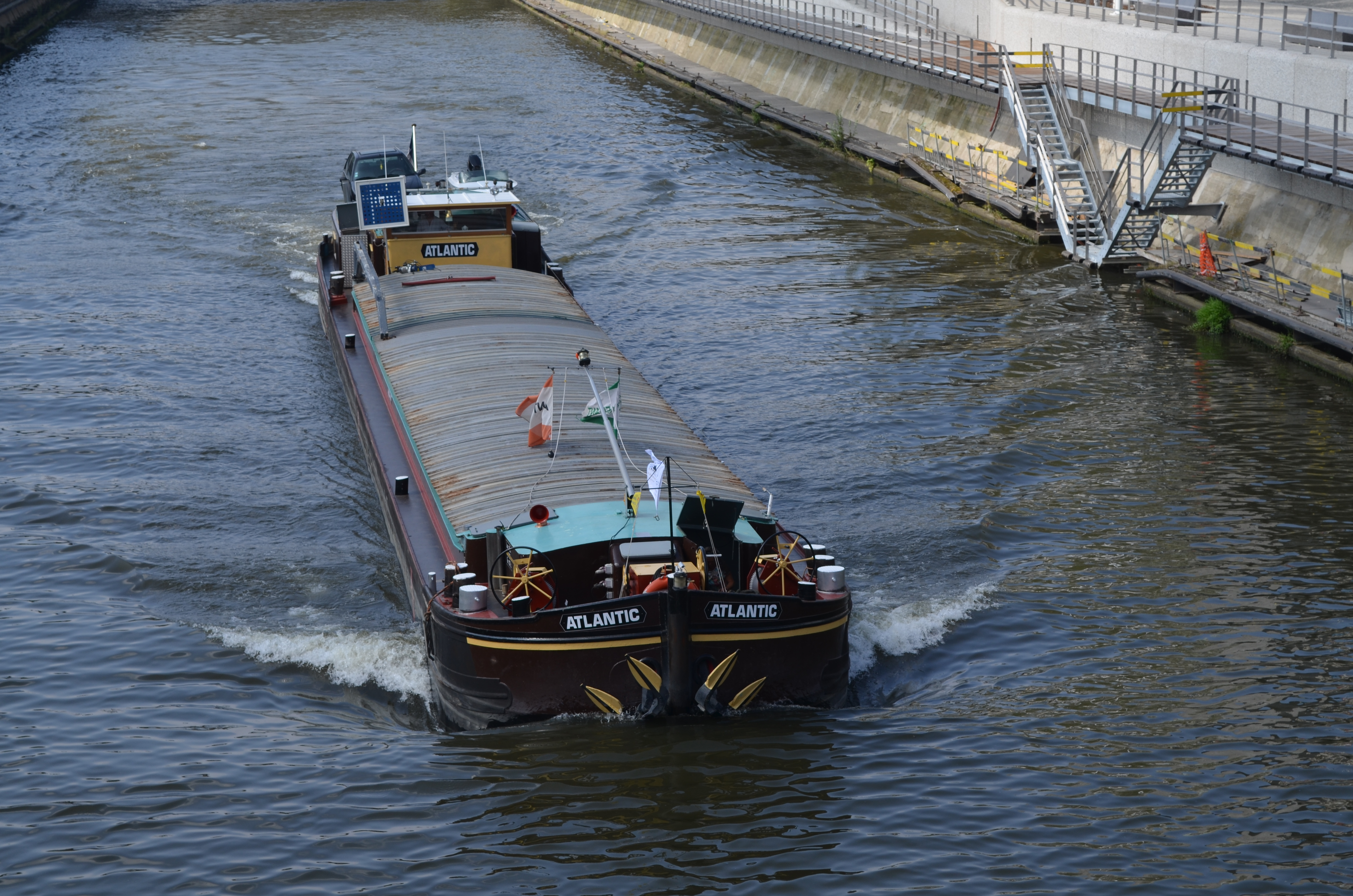|
Canal De L'Aisne à La Marne
The Canal de l’Aisne à la Marne (, literally ''Canal of the Aisne to the Marne'') is a canal in northeastern France which connects the Aisne and the Marne valleys. It runs from the Canal latéral à l'Aisne at Berry-au-Bac to Condé-sur-Marne on the Canal latéral à la Marne, a distance of 58 km. The canal rises 40m through 16 locks via the cathedral city of Reims, which is also a busy commercial port, to a summit level at an altitude of 95.70m. After crossing the watershed through a tunnel 2302m long at Mont-de-Billy, the canal drops down 23.80m through a flight of 8 locks towards the Marne. History Engineer Hugues Cosnier built the first canal between Reims and Sillery in the early 17th century. This was part of a grand plan to build canals by-passing Paris to the east. Work on this link followed those on the Canal latéral à l'Aisne, starting in 1841. The canal was opened in 1866. It was later planned to implement Cosnier’s idea of an orbital route from the Loir ... [...More Info...] [...Related Items...] OR: [Wikipedia] [Google] [Baidu] |
Canal
Canals or artificial waterways are waterways or engineered channels built for drainage management (e.g. flood control and irrigation) or for conveyancing water transport vehicles (e.g. water taxi). They carry free, calm surface flow under atmospheric pressure, and can be thought of as artificial rivers. In most cases, a canal has a series of dams and locks that create reservoirs of low speed current flow. These reservoirs are referred to as ''slack water levels'', often just called ''levels''. A canal can be called a ''navigation canal'' when it parallels a natural river and shares part of the latter's discharges and drainage basin, and leverages its resources by building dams and locks to increase and lengthen its stretches of slack water levels while staying in its valley. A canal can cut across a drainage divide atop a ridge, generally requiring an external water source above the highest elevation. The best-known example of such a canal is the Panama Canal. Many ... [...More Info...] [...Related Items...] OR: [Wikipedia] [Google] [Baidu] |
Aisne (river)
The Aisne ( , , ) is a river in northeastern France. It is a left tributary of the Oise. It gave its name to the French department of Aisne. It was known in the Roman period as Axona. The river rises in the forest of Argonne, at Rembercourt-Sommaisne, near Sainte-Menehould. It flows north and then west before joining the Oise near Compiègne. The Aisne is long. Its main tributaries are the Vesle, the Aire and the Suippe. The Battle of the Axona was fought near there between the Romans and the Belgae in 57 BC. Three Battles of the Aisne were fought in the Aisne valley during the First World War. Places along the river Departments and towns along the river include: * Meuse * Marne: Sainte-Ménehould * Ardennes: Vouziers, Rethel * Aisne: Soissons * Oise: Compiègne * Aisne: Berny-Rivière Navigation The river Aisne was used for commercial navigation as early as the Celtic period, and rafts were floated from a long distance above the present limit of navigation at Vailly ... [...More Info...] [...Related Items...] OR: [Wikipedia] [Google] [Baidu] |
Marne (river)
The Marne () is a river in France, an eastern tributary of the Seine in the area east and southeast of Paris. It is long. The river gave its name to the departments of Haute-Marne, Marne, Seine-et-Marne, and Val-de-Marne. The Marne starts in the Langres plateau, runs generally north then bends west between Saint-Dizier and Châlons-en-Champagne, joining the Seine at Charenton just upstream from Paris. Its main tributaries are the Rognon, the Blaise, the Saulx, the Ourcq, the Petit Morin and the Grand Morin. Near the town of Saint-Dizier, part of the flow is diverted through the artificial Lake Der-Chantecoq. This ensures both flood prevention and the maintenance of minimum river flows in periods of drought. The Marne is famous as the site of two eponymous battles during World War I. The first battle was a turning point of the war, fought in 1914. The second battle was fought four years later, in 1918. History The Celts of Gaul worshipped a goddess known as Dea Matrona ... [...More Info...] [...Related Items...] OR: [Wikipedia] [Google] [Baidu] |
Canal Latéral à L'Aisne
The Canal latéral à l'Aisne () is a canal in northern France, which connects the Canal des Ardennes at Vieux-lès-Asfeld to the canalised river Aisne (river), Aisne at Condé-sur-Aisne. It is long, with 8 locks. It runs alongside the Aisne. It has junctions with the Canal de l'Aisne à la Marne at Berry-au-Bac and with the Canal de l'Oise à l'Aisne in Bourg-et-Comin. En route Kilometre distances are given from east to west, and are continued along the canalised river Aisne (river), Aisne down to the junction with the Oise (river), river Oise at PK 108 *Point kilométrique, PK 0 Junction with Canal des Ardennes below the last lock of the latter, downstream from Vieux-lès-Asfeld *PK 10.5 Variscourt *PK 18.5 Berry-au-Bac junction, on the south side, with the Canal de l'Aisne à la Marne to Reims *PK 38.5 Right junction with Canal de l'Oise à l'Aisne in Bourg-et-Comin *PK 49 Vailly-sur-Aisne *PK 51.5 at Celles-sur-Aisne. Navigation continues in the canalised Aisne (river), Aisne ... [...More Info...] [...Related Items...] OR: [Wikipedia] [Google] [Baidu] |
Berry-au-Bac
Berry-au-Bac () is a commune in the department of Aisne in Hauts-de-France in northern France. Population See also * Communes of the Aisne department The following is a list of the 799 communes in the French department of Aisne. The communes cooperate in the following intercommunalities (as of 2020):Communes of Aisne Aisne communes articles needing translation from French Wikipedia {{Laon-geo-stub ... [...More Info...] [...Related Items...] OR: [Wikipedia] [Google] [Baidu] |
Condé-sur-Marne
Condé-sur-Marne (, literally ''Condé on Marne'') is a commune in the Marne department in north-eastern France. See also *Communes of the Marne department The following is a list of the 613 communes in the French department of Marne. The communes cooperate in the following intercommunalities (as of 2020):Condesurmarne {{Marne-geo-stub ... [...More Info...] [...Related Items...] OR: [Wikipedia] [Google] [Baidu] |
Canal Latéral à La Marne
A lock. The canal latéral à la Marne is a long canal in the Marne department in north-eastern France.Fluviacarte Canal latéral à la Marne It connects to , and includes 15 s. It overcomes a height difference of 34 meters and runs parallel to the river |
Canal Aisne Marne Reims Quays
Canals or artificial waterways are waterways or engineered channels built for drainage management (e.g. flood control and irrigation) or for conveyancing water transport vehicles (e.g. water taxi). They carry free, calm surface flow under atmospheric pressure, and can be thought of as artificial rivers. In most cases, a canal has a series of dams and locks that create reservoirs of low speed current flow. These reservoirs are referred to as ''slack water levels'', often just called ''levels''. A canal can be called a ''navigation canal'' when it parallels a natural river and shares part of the latter's discharges and drainage basin, and leverages its resources by building dams and locks to increase and lengthen its stretches of slack water levels while staying in its valley. A canal can cut across a drainage divide atop a ridge, generally requiring an external water source above the highest elevation. The best-known example of such a canal is the Panama Canal. Man ... [...More Info...] [...Related Items...] OR: [Wikipedia] [Google] [Baidu] |
Hugues Cosnier
Hugues Cosnier () was a French engineer who conceived of the Briare Canal who was born in Tours, 1573, and died in 1629. in Paris He proposed to Henri IV the idea of building a canal from the Loire River to the River Seine. It would go from Briare to Montargis and then continue to the Seine via the Loing River. Cosnier began the canal in March 1604. He abandoned the project in 1610 with the death of Henri IV. In 1620, he was invited to continue his work on the canal. His death prevented him continuing the effort. Guillaume Boutheroue completed the canal between 1638 and 1642. Also in 1603, he received a grant to establish silkworm breeding, sericulture, in Poitou Poitou (, , ; ; Poitevin: ''Poetou'') was a province of west-central France whose capital city was Poitiers. Both Poitou and Poitiers are named after the Pictones Gallic tribe. Geography The main historical cities are Poitiers (historical c .... The endeavor failed. In 1618, his idea of encircling Paris with c ... [...More Info...] [...Related Items...] OR: [Wikipedia] [Google] [Baidu] |
Canal De L’Oise à L’Aisne
Canals or artificial waterways are waterways or engineered channels built for drainage management (e.g. flood control and irrigation) or for conveyancing water transport vehicles (e.g. water taxi). They carry free, calm surface flow under atmospheric pressure, and can be thought of as artificial rivers. In most cases, a canal has a series of dams and locks that create reservoirs of low speed current flow. These reservoirs are referred to as ''slack water levels'', often just called ''levels''. A canal can be called a ''navigation canal'' when it parallels a natural river and shares part of the latter's discharges and drainage basin, and leverages its resources by building dams and locks to increase and lengthen its stretches of slack water levels while staying in its valley. A canal can cut across a drainage divide atop a ridge, generally requiring an external water source above the highest elevation. The best-known example of such a canal is the Panama Canal. Many ... [...More Info...] [...Related Items...] OR: [Wikipedia] [Google] [Baidu] |
Moselle
The Moselle ( , ; german: Mosel ; lb, Musel ) is a river that rises in the Vosges mountains and flows through north-eastern France and Luxembourg to western Germany. It is a bank (geography), left bank tributary of the Rhine, which it joins at Koblenz. A small part of Belgium is in its drainage basin, basin as it includes the Sauer and the Our River, Our. Its lower course "twists and turns its way between Trier and Koblenz along one of Germany's most beautiful river valleys."''Moselle: Holidays in one of Germany's most beautiful river valleys'' at www.romantic-germany.info. Retrieved 23 Jan 2016. In this section the land to the north is the Eifel which stretches into Belgium; to the south lies the Hunsrück. The river flows through a region that was cultivated by the Ro ... [...More Info...] [...Related Items...] OR: [Wikipedia] [Google] [Baidu] |
Péniche (barge)
A péniche (or spits in Dutch) is a steel motorised inland waterway barge of up to 350 tonnes' capacity. Péniche barges were built to fit the post-1880s French waterways and the locks of Freycinet gauge. They are visually similar to a Dutch barge, but built to different specifications. Dimensions The critical detail for the péniche is the dimension, a maximum of 38.50m (126 ft) long, 1.60m draft and wide. They were especially designed for the Belgian and French canal locks, and as a result of the wish to maximise space for freight, the barges tend to be flat-sided, with short, rounded bows and sterns. Nowadays the specification is still applied for commercial navigation as Class I in the Classification of European Inland Waterways. History The péniche originated in Belgium, as a wooden vessel for inland navigation.Spits vaartips.nl, retrieved 7 ... [...More Info...] [...Related Items...] OR: [Wikipedia] [Google] [Baidu] |





